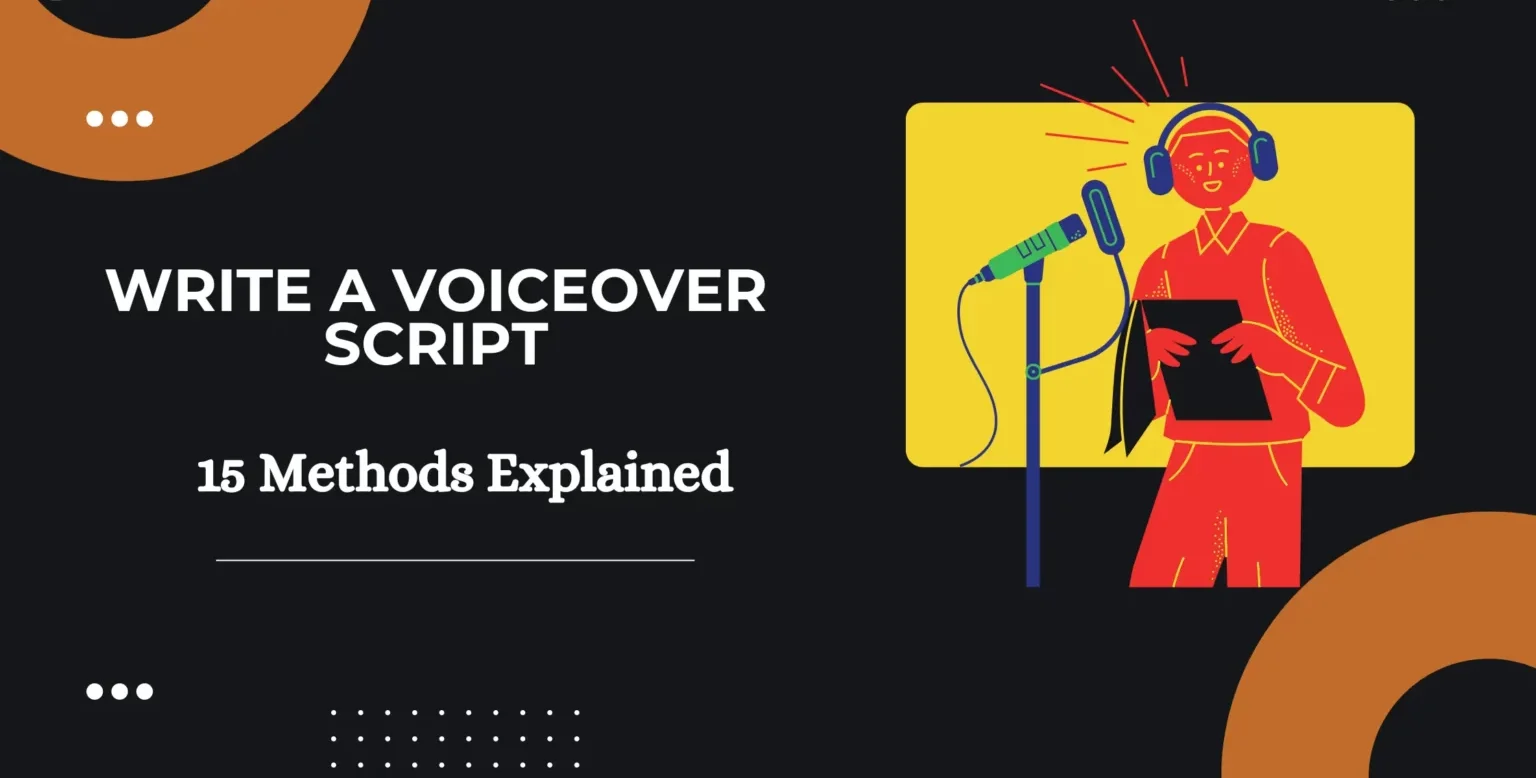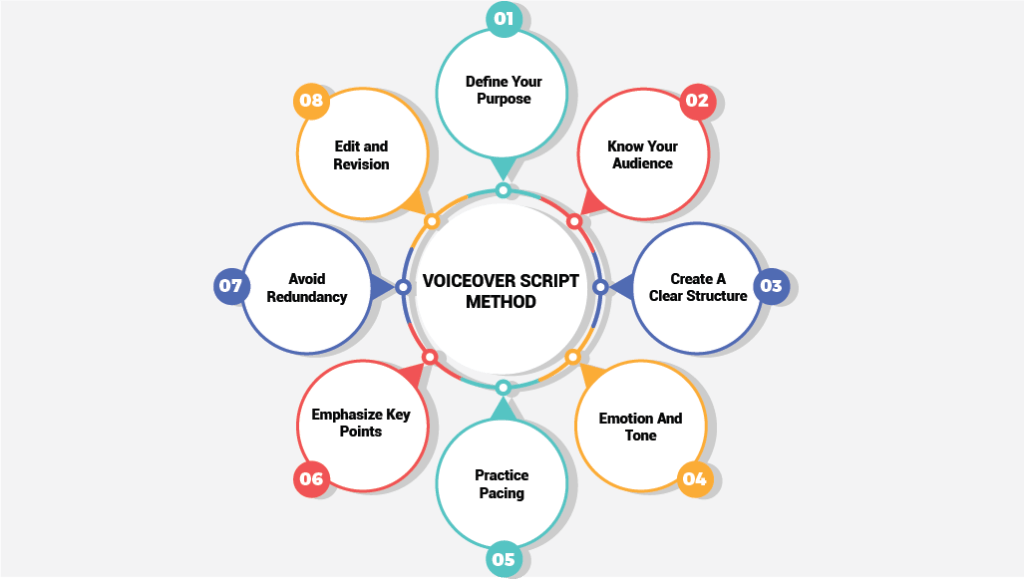- Blog
How to Write a Voiceover Script – 15 Methods Explained

Welcome to the realm of scriptwriting magic, where words transform into voices, stories, and emotions that resonate with your audience. As video content and captivating narratives hold, the power of a compelling Voiceover Script cannot be overstated.
Whether you’re a seasoned content creator looking to breathe life into your next project or a newbie eager to embark on the exciting journey of voiceover narration, you’ve come to the right place.
At Lincoln Writes Company, we understand the significance of a well-crafted voiceover script. So, in this blog, we’re about to embark on an exhilarating exploration of not just one, two, or even five, but 15 ingenious methods that will unlock the secrets of crafting an exceptional Voiceover Script.
So, grab your pens, open your minds, and let’s embark on this epic journey of words, Voice, and imagination.
Top 15 Methods to Create Your Voiceover Scripts
Top 15 Methods to Create Your Voiceover Scripts

1. Define Your Purpose
A Voiceover Script should always have a clear purpose. What message do you want to convey? What emotions or reactions do you want to evoke in your audience? Before you start writing, define the primary purpose of your script. This could be to inform, persuade, entertain, or inspire. This question should be at the forefront of your scriptwriting process. Defining your purpose ensures that you stay focused and avoid veering off track.
Imagine; You’re creating a voiceover script for a product commercial. Your purpose might be to highlight the product’s unique features and how they can improve the customer’s life. Keep this purpose in mind as you write.
2. Know Your Audience
Understanding your target audience is essential. Different audiences have different expectations and preferences. Are you addressing professionals, children, or a specific niche group? Research your audience’s demographics, interests, and needs. Tailor your script to speak to them directly.
2. Targeted Marketing
Suppose; Your script is for a children’s educational app. Knowing your audience includes considering the age group, their learning style, and the topics they find engaging. You would then craft a script that resonates with the curiosity and enthusiasm of young learners.
3. Create a Clear Structure
An organized script is essential for a smooth and coherent voiceover. Consider structuring your script into sections or chapters if it’s a longer piece.
Begin with an introduction, followed by the main content, and end with a conclusion.
Ensure a logical flow of information. A clear structure makes it easier for your audience to follow and comprehend the content.
Here’s an example of a structured outline for a tutorial video:
Example: Introduction: Welcome to the world of adventure! (Engage the audience.)
Main Content: Explore the exciting features of our new product.
Conclusion: Don’t miss the opportunity to experience this revolution!
4. Start with a Hook
A “hook” is a term often used to refer to the opening or introductory lines of the script. It’s the part of the script that is intended to grab the audience’s attention, pique their interest, and draw them into the content of the voiceover.
Therefore, your script’s introduction should grab the audience’s attention.
What is the best hook, actually? A compelling hook can be a question, a surprising fact, or a relatable anecdote.
For instance; In a script for a fundraising campaign, you could start with a heartwarming story of someone the campaign has helped, immediately engaging your audience’s emotions and empathy.
5. Write Concisely
In the world of voiceover, simplicity, and brevity is key for ensuring your message is clear and memorable. Avoid overly long sentences and complicated language. Try to keep your Voiceover Script concise and to the point
5. Review and Feedback Management
For instance; Let’s say in a product description script, you might say, “This innovative device makes your life easier by automating everyday tasks,” instead of a lengthy explanation of each specific task. Or instead of saying, “In the event that you decide to make a purchase,” say, “If you choose to buy.”
6. Use Active Voice
Passive Voice: “The decision was made by the team to launch the new product.”
Active Voice: “The team decided to launch the new product.”
7. Maintain a Consistent Tone
Consistency in tone is crucial to maintain a cohesive voiceover. Ensure your script has a consistent tone that aligns with your brand and message. If you’re aiming for a professional tone, maintain it throughout. If your script is meant to be humorous, inject humor consistently.
For instance; If your brand is known for its friendly and approachable tone, maintain it throughout the script, even when discussing technical details.
8. Use Simple Language
Avoid using overly complex or technical language unless your audience is familiar with it. Simple language makes the content more accessible and ensures that your message is understood.
9. Incorporate a Call to Action
A Voiceover Script should guide your audience towards a specific action. Whether it’s to buy a product, subscribe to a channel, or learn more, include a clear and compelling call to action (CTA).
For instance; For your product, you can go with “To start your adventure today, click the ‘Buy Now’ button and unlock a world of possibilities!”
10. Add Visual Descriptions
Since voiceovers are often used in conjunction with visuals, adding visual descriptions to your script can enhance the viewer’s experience. Try to paint a vivid picture with words. But how to use descriptive language to help the audience visualize what you’re talking about. This is especially important for scripts accompanying visual content.
11. Practice Pacing
Pacing in voiceover scripts refers to the timing and rhythm at which the spoken words are delivered. It is a crucial aspect of voice-over work, as it can greatly impact the overall effectiveness of the message being conveyed.
Consider the tempo at which your script will be delivered. Pacing can significantly impact the audience’s comprehension and engagement.
For instance; Let’s say you are creating a trailer for a suspenseful movie; a faster-paced script can create excitement and anticipation, while a slow-paced script may be more fitting for a meditative guided meditation.
12. Emphasize Key Points
Highlight essential information through changes in tone, volume, or pacing. This draws attention to the most critical elements of your script. Let’s say you are writing a voice-over script for a video tutorial; how would you do that? For a tutorial video, you may emphasize key steps by speaking more slowly and clearly to ensure viewers grasp the crucial details.
13. Avoid Redundancy
Redundancy is such a turn in everything, whether it’s a daily conversation or a voiceover script. Repeating information excessively can lead to viewer disinterest. Ensure that every word in your script adds value and moves the narrative forward.
The question may come to your mind: how? Avoid repeating the same benefits throughout the script. Instead, focus on each unique aspect.
14. Edit and Revise
Editing and revising a voiceover script is a crucial part of the voiceover production process. It ensures that the final script is clear, engaging, and effectively conveys the intended message. That’s why effective script writing often involves multiple drafts. So, don’t forget to edit your script to refine it, checking for clarity, flow, and engagement.
Let’s say you decided to edit and revise your voiceover script. This approach will help you to remove redundant details and reorganize the content for a more engaging narrative.
15. Seek Feedback
Last but not least, this step holds the power to make or break your voiceover script game. So, don’t hesitate to seek feedback from colleagues, any trusted friends, or test audiences. Other perspectives can help you identify areas for improvement and fine-tune your script.
Picture this; After receiving feedback on a draft of your video script, you might adjust the explanations based on viewers’ input to ensure better clarity and understanding.
Ending Note:
Writing a captivating Voiceover Script is a combination of art and science. By defining your purpose, knowing your audience, and employing these 15 methods, you can craft a script that not only informs but also engages and marks a lasting impression on your audience. Whether you’re narrating a story, selling a product, or educating your viewers, the power of a well-crafted Voiceover Script cannot be underestimated. So, get creative, start writing, and let your Voiceover Script speak volumes!

We are an expert ghostwriting team that takes your imagination, adds a thing or two, and turns it into a successful book.